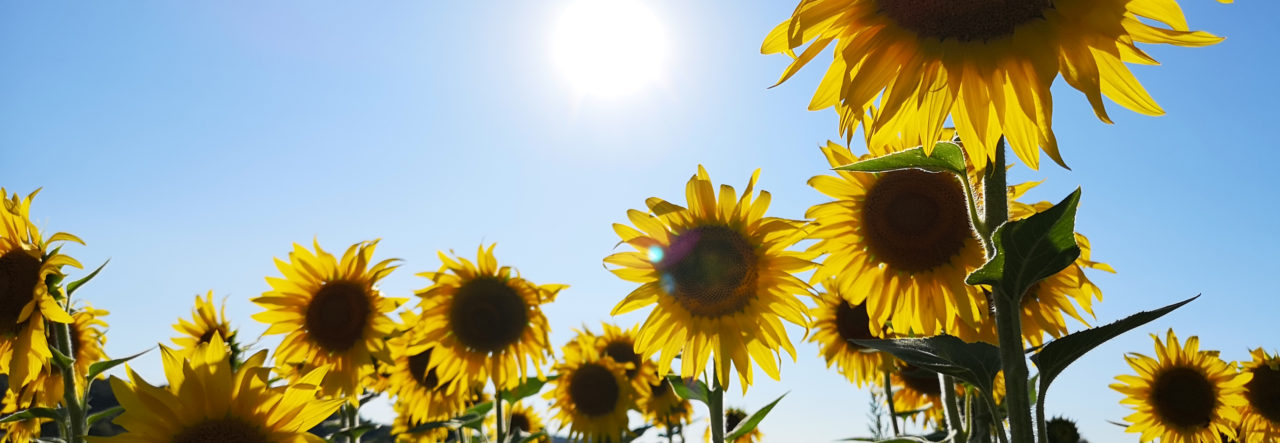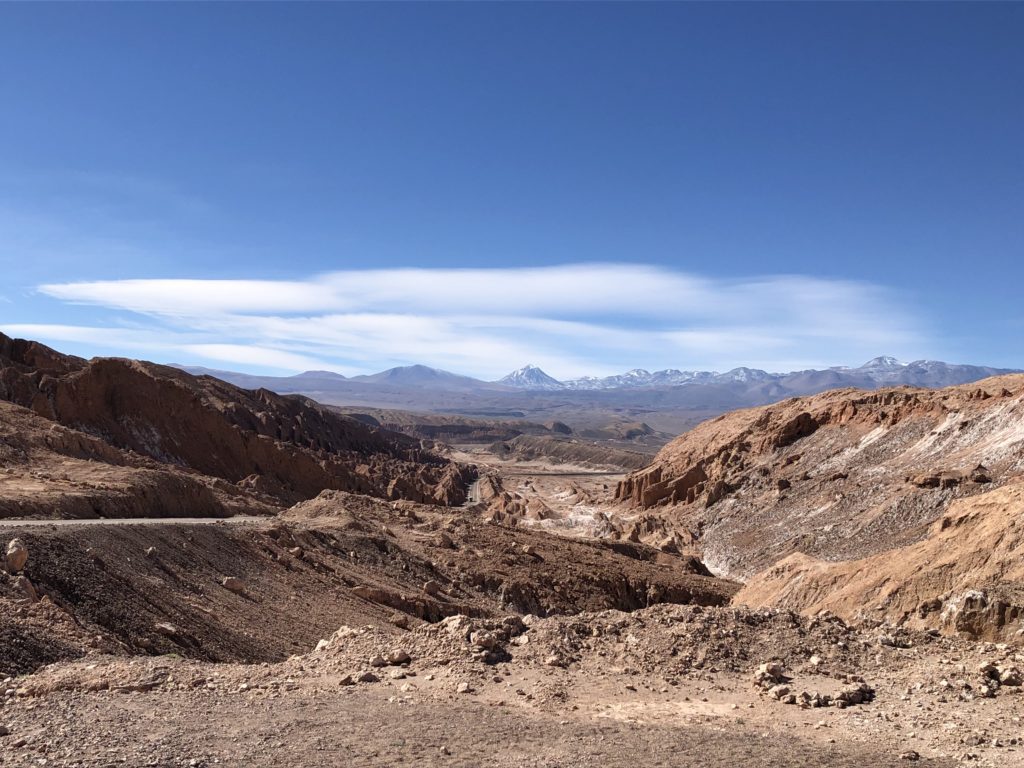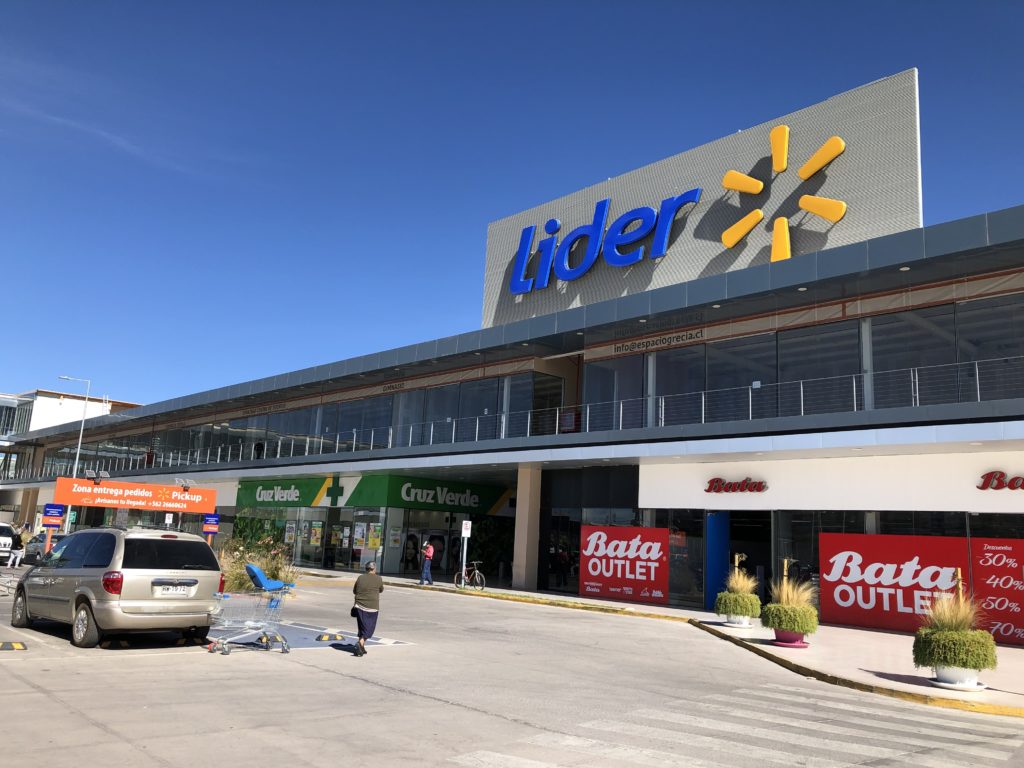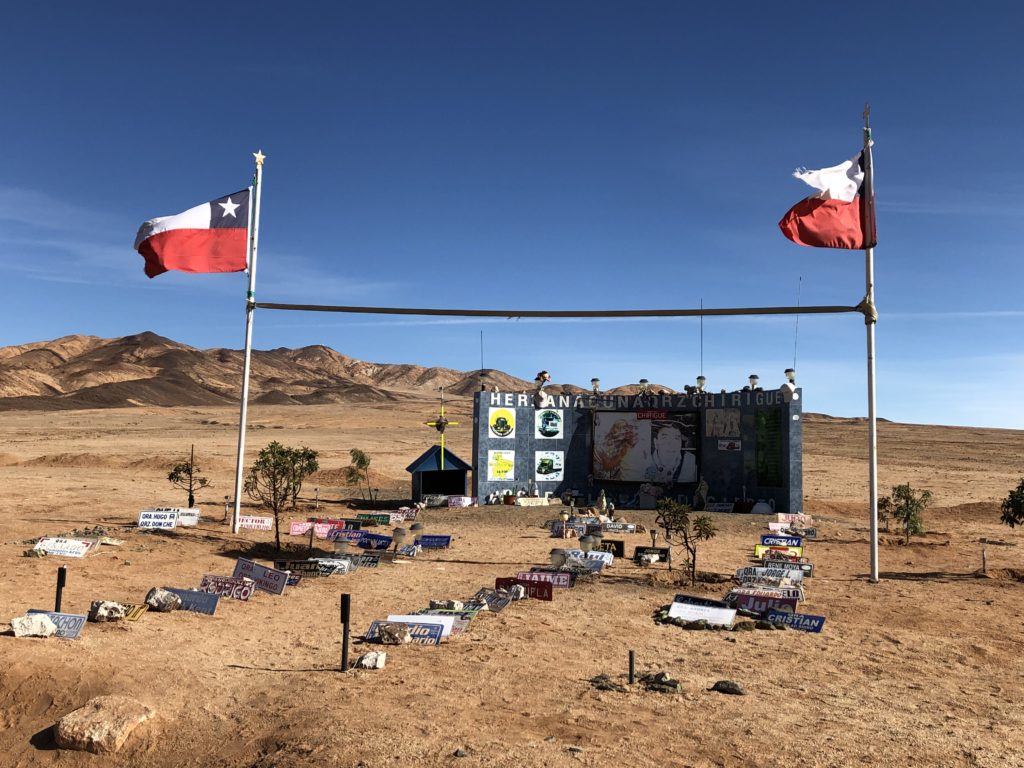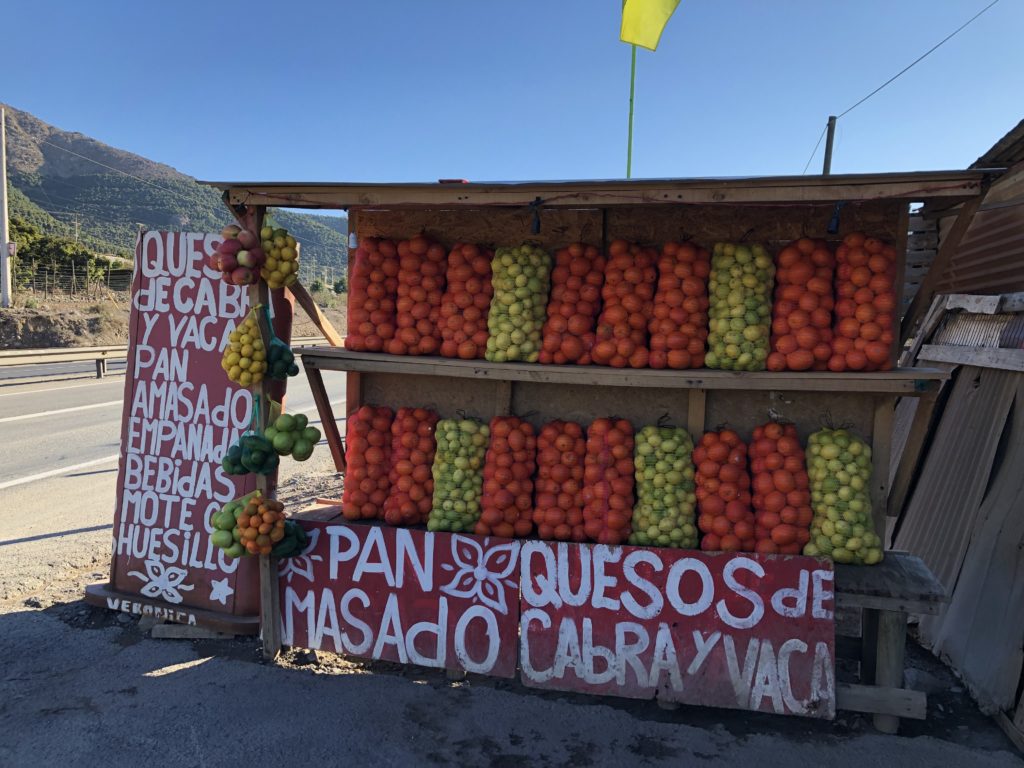Day 4/Part 5–
It was approaching sunset by the time that we were ready to find a place to park the camper for the night. Since we had decided to go to out to one of the lagoons to see the flamingos the next day, we figured that we could drive out there in the evening, so we would be well-positioned in the morning. There are many lagoons to pick from, but we opted for Laguna Chaxta, because it was a bit bigger than the two closest lagoons, but it was much closer than a few of the others. In other words, we thought that our plan was perfect!
We left the activity of San Pedro de Atacama and headed south on Route 23, and only we passed only one or two cars along the way. As the sun was starting to set, we pulled over and took a few photos of the mountains in the distance.


We drove about an hour, and we easily found our turn off to the right. We left the “main” road and began traveling on a sandy, dirt road. Almost instantly, we saw a sign that indicated that our target was 10 kms further, and that we were in the middle of construction zone. As we continued to travel, sand piled increasingly higher and higher on either side of us, making it feel like we were traveling down a chute, rather than a road.
We passed many construction vehicles, abandoned for the night, and silhouetted against the night sky which was glowing with stars. All-in-all, it was a neat experience, until…we saw a set of headlights coming towards us in the distance.
As the distance between us diminished, I wondered how we would pass each other. Fortunately, the construction “gods” prevailed, and the road slightly widened as we met. The car pulled up next to us, and the driver rolled down his window. A man with a heavy black beard and a construction hat, told us (in Spanish) that the road was closed for the night, and that we would have to turn around. We understood one or two words, but his hand motions were clear—turn around—now!
Of course, we listened to his directive and we backed up until we found a little place where we could turn around. He followed us out, making sure that we left the area. When we reached the end of the road, we turned right on the main road, and we saw that he had turned left. We drove for a minute or two, not seeing anyplace that we could pull over, so Pierre turned around and started heading back. We arrived at the turn off (this time to our left), and like a moth to a flame, Pierre turned in again.
“What are you doing?” I wailed. “He told us we had to turn around!”
“He’s gone,” Pierre answered with a devilish smile.
“You’re going back in?” I asked, feeling very unsure for the first time on this adventure.
Pierre aimed the car back down the road and within a few moments, we saw a light bobbing off to our left. “Someone is riding a bike out here,” Pierre declared with astonishment.
“No, it’s a guy walking.” I answered.
We watched his headlight bob toward us, and when he got close enough, he motioned for us to stop. Pierre rolled down the window and the man pointed his flashlight into the car. I breathed a sigh of relief when I saw that it wasn’t the bearded man who had just told us to turn around.
This man, much older than the first, leaned his head in the window and began talking. His tone was friendly, and of course he was speaking in Spanish. The gist of what he was saying was—
No, you can’t drive down here. It’s closed until morning. You can go that way (he pointed with his flashlight in the direction of San Pedro de Atacama), or that way (pointing his flashlight the other way), but not this way (pointing his flashlight toward the lagoon). He talked, and he talked, and he talked. Finally, I told him (in Spanish) that we didn’t understand Spanish. He kept talking and waving his flashlight around.
At one point, I had to turn my head toward my window, to keep myself from laughing. Every time the man said something in Spanish, Pierre answered him in English out of desperation. I don’t think it ever occurred to the man that we didn’t understand him, and that we didn’t speak Spanish.
Not knowing how to extract ourselves from the situation, I repeated in English, everything I thought he had said to us in Spanish. “Okay, the road is closed tonight because of construction. We have two options. We can go that way,” I pointed to the left. “Or we can go that way,” pointing to the right. “I think we’ll head back to San Pedro de Atacama.”
He smiled and seemed satisfied. He waved at us with his flashlight as we backed out and began to head down the main road. I finally burst out laughing, because I just couldn’t hold it in any longer.
“He was so sweet, but I don’t think he understood that we didn’t know what he was talking about!”
We had to backtrack about twenty minutes before we finally found a suitable place to pull over for the night. As we pulled in, Pierre muttered, “Those flamingos better be worth it!”
I burst out laughing again—what an adventure! Like Pierre, I hoped that we wouldn’t be disappointed in the morning.
